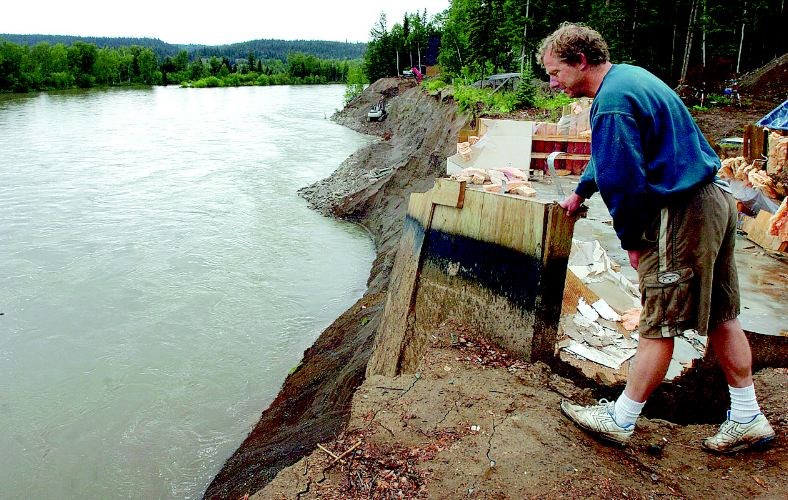A B.C. Court of Appeal Justice has upheld a lower-court decision in which a judge dismissed a lawsuit against the Fraser-Fort George Regional District by a group of property owners over the loss of river-front property due to erosion because the plaintiffs took too long to file.
In a notice of claim filed in late 2014, Island Park Drive residents Katherine Lewis, John Orlowsky, John Ball and Rick and Sarah Urquhart had alleged the FFGRD was negligent when it failed to warn them of erosion dangers in that area.
Their homes were located along a bend in the Nechako where in 1997 and again in 2007, varying but significant amounts of riverside frontage were lost to high water flow. Following the 2007 event, all but one of the homes were moved further away from the riverbank but the province limited its support to $60,000 per home.
In March 2017, Justice Marguerite Church found in favour of the FFGRD, agreeing that the property owners' claim was statute barred under the province's Limitation Act. The sides agreed the limitation period is six years but differed over when the clock started to run.
Following a major event in 1976, the Ministry of the Environment told the FFGRD that the area was prone to significant erosion. In response, in 1977, the FFGRD directors of the time passed a resolution requiring those seeking to develop the site to provide a letter stating they are aware of the hazard and accept responsibility for any resulting damage.
But between 1989 and 1992, building permits were issued without any of the five providing a letter. They contended they became aware of the resolution only in 2009 and so argued the limitation period started from that date.
Conversely, the FFGRD argued the running time began no later than 1998 when the plaintiffs received a consultant's report warning their properties were in jeopardy.
Church agreed with the FFGRD's position, finding that once the report was in their hands, the property owners would have had reason to follow up with the FFGRD and could have discovered the existence of the 1977 resolution.
On appeal, the plaintiffs disputed that finding.
Even if they had made inquiries in 1998, they contended that at best they would have been led to a 1986 zoning bylaw that, in turn, would have led them to believe the FFGRD would have had no liability for the setbacks because they had been established by the province.
Consequently, they would not have learned of the FFGRD's "duty to warn" as reflected in the 1977 resolution as the FFGRD itself appeared to have "forgotten" its existence, and so would not have identified the FFGRD as a potential defendant.
But while she disagreed slightly with her reasoning, Court of Appeal Justice Mary Newbury found Church did not err in finding that once they received the 1998 report, they could have determined that the FFGRD was at least a "potential defendant," regardless of whether they would have discovered the 1977 resolution.
On the chance a superior court had overturned her decision, Church had also gone through the process of calculating how much the FFGRD should pay in damages. In all, the property owners were seeking $667,440.75. In her concurrent finding, Church lowered the amount to $382,419.82 largely by limiting the damages to the cost of moving their homes, rip rap and labour and eliminating costs associated with loss of river view and privacy and stigma to property.
Newbury's decision, which was supported by two fellow Court of Appeal Justices, was issued on Friday.

.png;w=120;h=80;mode=crop)

